12 weeks to publication? Not a problem!
Sometimes you just have to take the opportunities that arrive in front of you, and make the most of it by throwing yourself wholeheartedly into them! My higher degree research (HDR) adventure has got off to a great start with the opportunity to take part in an intensive course aimed at finalising a paper ready for publication in just 12 weeks. When I was only about 12 weeks into my project, it seemed quite a stretch for me to think that I could smash out my first article before the end of 2018. But, being a lover of challenges, I couldn’t let this opportunity pass. So in week 1 of the course, I rocked up eager to learn. And boy, did I learn! Luckily, my learning style is to learn by doing, which is similar to advice from the ‘experts’ – you have to write to get better at writing. 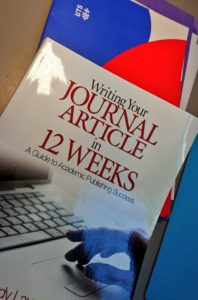
The course was based on this book:
Belcher, W. L. (2009). Writing Your Journal Article in Twelve Weeks: A Guide to Academic Publishing Success. SAGE.
The book has 12 chapters (plus intro and follow-up chapter) to work through each week, which are developmental in relation to planning and starting your article, consistently working on it, through to completion and submission. However, it is not mandatory to do all chapters in strict order. For example, I needed to get early feedback from my supervisors so that I could make sure I was on the right track with the article, but in the book that’s Week 9: “Giving, Getting and Using Others’ Feedback”. Asking for, and receiving feedback can be a bit daunting so this chapter was really helpful to read through when I really needed that information.
Apart from the textbook, the course itself was conducive to a lot of sharing and support from the facilitators and other participants. The facilitators were there to write articles as well, which meant that they were coaching the group while also learning from the group. The other participants ranged in writing experience, from those who were yet to publish (like myself), to one person who was the editor of a journal! Everyone had some knowledge and experience to share regardless of their ‘stage’. It was also really interesting to hear from the more experienced writers that they still found it difficult to write sometimes! They had loads of strategies to share in relation to beginning an article, maintaining motivation and progress and also tips on selecting journals and even writing to journal editors (to get early feedback on whether the journal would consider the article). I now regularly use a quazi-pomodoro technique on my HDR days, which helps to get through necessary tasks (writing or reading or anything!) when I have a large chunk of time to devote to HDR tasks.
“Everyone had some knowledge and experience to share”
During the 12 weeks I also had the opportunity to do a “writing bootcamp”. Bootcamp is not my favourite word. Is it anyone’s favourite word? Bootcamp is not something I would usually sign up for voluntarily… but put the word ‘writing’ in front of it and I knew it was something I had to try out. So, once again, I put on my brave pants and attended my first writing bootcamp about 8 weeks into the 12 week course – and I was hooked! Everyone in the room was there to focus on writing tasks which we shared with each other throughout the day as encouragement. As a group, we worked to a pomodoro style structure from 9am to 4pm on a Friday. We started the day with a 25 minute session to get the day started, and then moved into some 45 minute writing sessions (after the caffeine had REALLY kicked in!). What a great way to make some strong progress with writing. Making writing tasks social (in a structure and productive environment) is a great strategy to keep moving forward when things can potentially be tedious.
Over the last 7 months, since enrolling in higher degree research, I feel like I have developed some very good habits for reading, writing and managing my HDR time that will hopefully serve me well over the years to come!
(and I’ll let you know when the article is published!)
I leave you with a few photos that I took during the 12 weeks as an illustration of my commitment to ‘snack writing’ (often literally with snacks!) which is a strategy that encourages writers to timetable in small amounts of time to write whatever you can. You don’t need whole days to make progress – one hour each day can result in good progress. So I wrote on the train, on car trips (luckily I don’t get motion sickness), in cafes, while eating breakfast, and even with beautiful views over Lake Macquarie.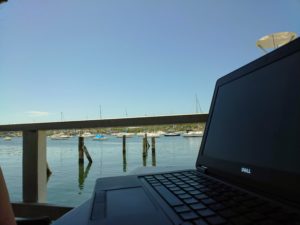
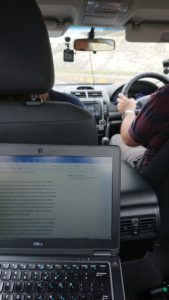
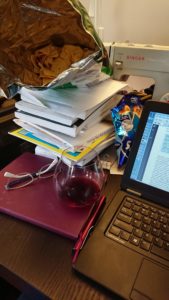
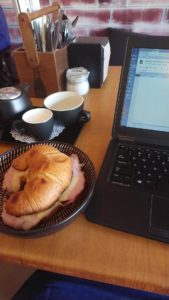
Harmony.. thankyou my friend.. a great blog post.. I’m going to lock in some snack writing now!
Thanks Jo, glad you liked it and that it has prompted some snacking! Let me know how you go… one of the other key messages I kept hearing is to make writing social – the ups and downs of writing are more tolerable when you have people around you (in-person or virtual).